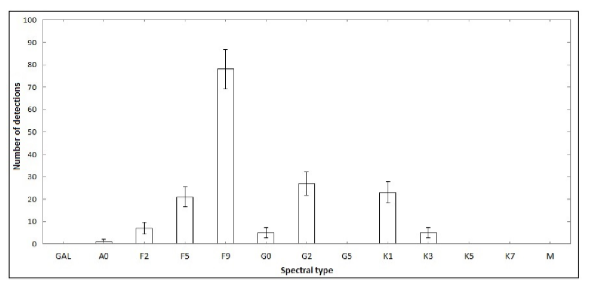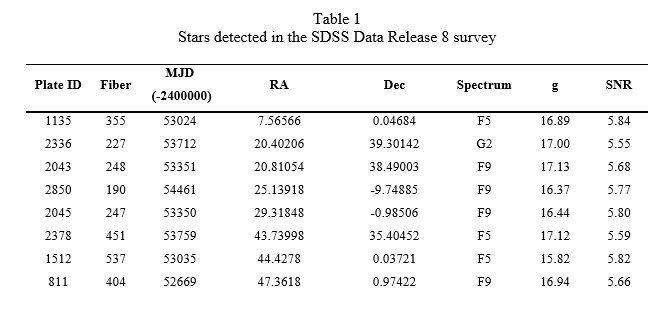Either these are unusual stars, or 234 alien civilizations send us their regards

Everyone wants aliens to discover themselves. Green, pink, brown, gray. Or maybe Vulcans , Klingons , creatures of pure energy. Yes, any.
Therefore, each time there is a mysterious signal or energy fluctuation from space in one of our telescopes, the headers explode with messages like: " Have we finally detected an alien signal? " But scientists know that there is no need to hurry with it.
')
In such things, the main thing is skepticism. After all, before we always found a more prosaic reason for signals received from space. But skepticism does not mean that you need to be biased and dismiss opportunities.
And now, a new study from the astronomers Borra and Trottier [EF Borra / E. Trottier] from the University of Laval in Canada has appeared. Their work "The discovery of strange periodic spectral modulations in a small number of solar-type stars" was recently published on arXiv.org. This site publishes works without prior expert verification, but it has already aroused some interest.
Astronomers used data from the Sloan Digital Sky Survey project and analyzed the spectra of 2.5 million stars. Among them were 234 stars, emitting a strange signal. This is a small percentage, and, as scientists say, "the shape of the signal coincides with the signals that can come from extraterrestrial civilizations," the shape of which was predicted in a previous study by Borra .

Prediction is the key point of the scientific method. If you developed a theory, it looks the better, the more it can be used to correctly predict future events. We can recall how often Einstein's predictions came true on the basis of the theory of relativity.
The 234 stars in the study of Borra and Trotier were not accidental. Most of them are in the spectral range from F2 to K1. This is important because the spectrum of our Sun is located at the center of this range. And the only intelligent life we know has developed just at such a star. Is it possible that a different mind lives next to the same stars?
The authors offer five explanations for their findings: artifacts of tools and data processing, rotational transition in molecules, Fourier transform for spectral lines, fast pulsations, or, finally, a signal from an extraterrestrial civilization. In this paper, scientists reject variants with molecules and pulsations and subject Fourier analysis to serious doubt. This leaves two possibilities - either the problem in Sloan’s tools and data processing, or these are really signals from extraterrestrial civilizations.
The detected signals are electromagnetic pulsations separated by equal time intervals. Signals of this type Borra predicted in his work from 2012, and it was in search of them in the Slanov data that he went along with Trot. It may seem suspicious that scientists are finding exactly what they were looking for. But our heroes themselves are cautious about their results.
As they write in their work, "Although this is unlikely, there is a possibility that these signals arise from the very unusual chemical composition of a small fraction of stars from galactic halos." This is unlikely, but many discoveries at first also seem unlikely. Perhaps there is a very small percentage of stars whose chemical features make them behave that way.

It turns out that two astronomers have found a very small number of stars, very similar to our Sun, and, apparently, emitting pulsating signals. These signals are exactly the same as could be expected from a technologically advanced community using high-power lasers to communicate with distant stars.
Everyone wants aliens to discover themselves, and perhaps the first signs of their existence will be pulsating signals from stars like the Sun. But the study is still in its early stages, and as the authors write, "at this stage the hypothesis must be confirmed by additional work."
And additional work has already been planned by the Breakthrough Listen Initiative project, looking for extraterrestrial intelligence in space. They plan to use the Automated Planet Finder telescope at the Lick Observatory to further explore some of the 234 stars found.
The project team is not too enthusiastic about the work described. They have already commented on it with the old axiom “extraordinary statements require extraordinary evidence.” They also put this work from 0 to 1 on the Rio scale . This is a digital assessment of the potential significance of the message about the detection of extraterrestrial intelligence. Since 2002, it has been officially used in SETI projects. Rating from 0 to 1 means little information.
So hold the reins, headline master.
Source: https://habr.com/ru/post/399445/
All Articles